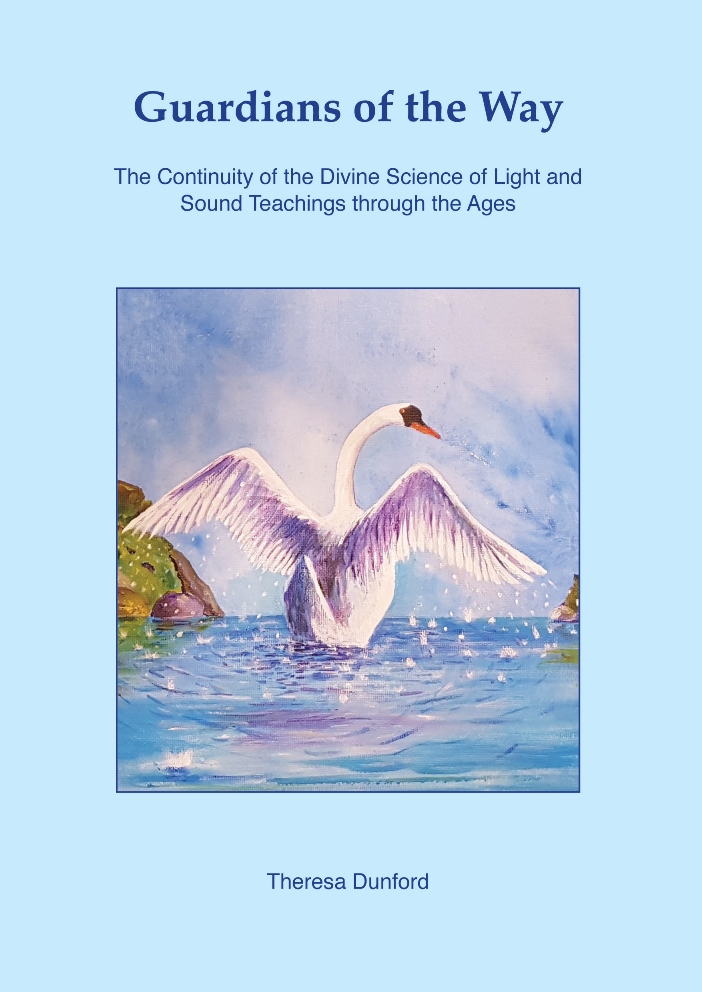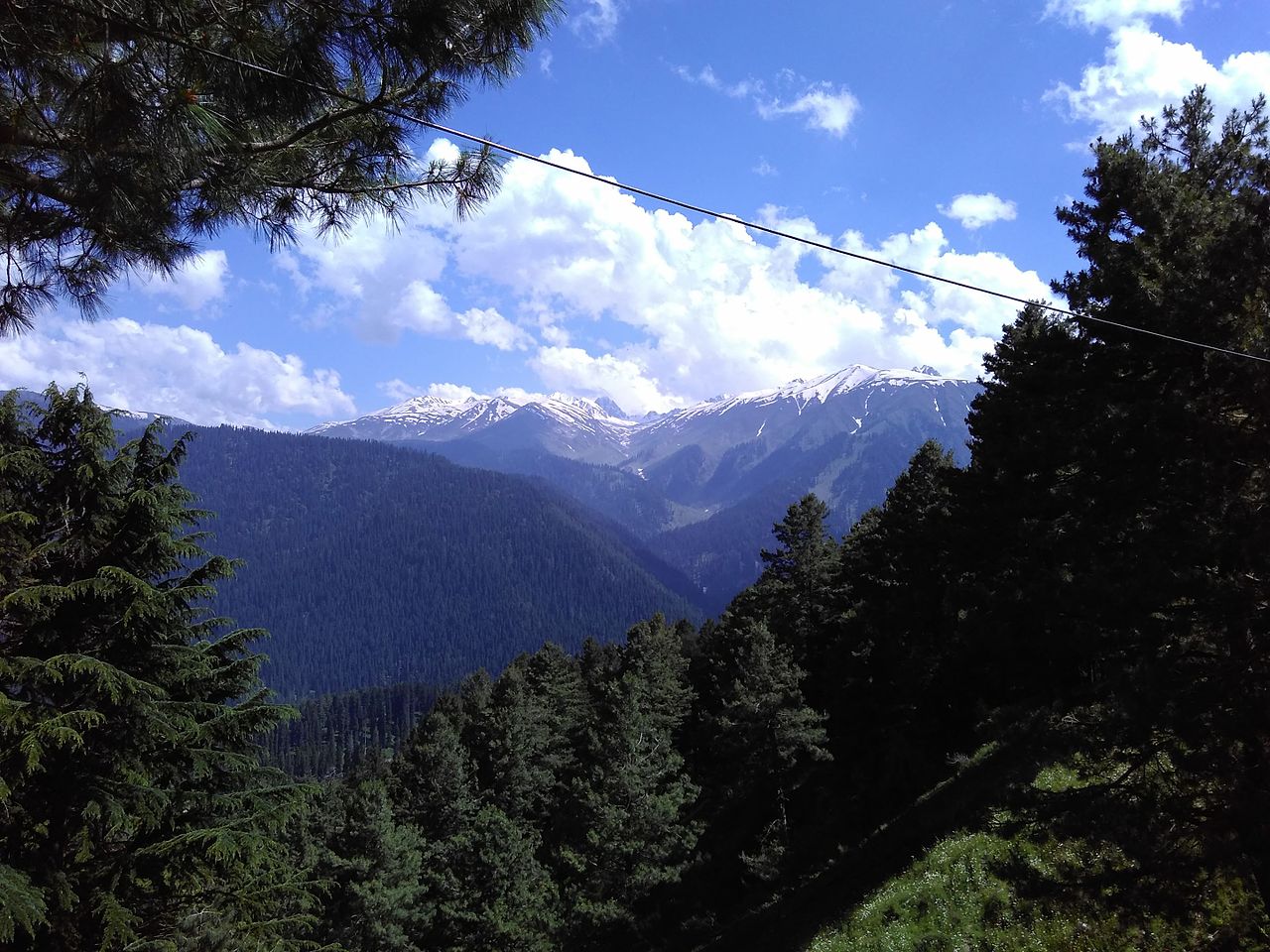Sacred Connections Scotland
Guardians of the Way
The Continuity of the Divine Science of Light and Sound
Teachings through the Ages
Theresa Dunford
Colour illustrations, endnotes, appendices,
bibliography, 200 pages.
Publication: 2020
This book profiles the lives and teachings of: Lao Tze , Jesus, Jalal al-Din Mohammad al-Rumi, Hafez, Kabir, Guru Nanak Dev Ji, Tulsi Sahib of Hathras, Seth Shiv Dayal Singh (Soami Ji Maharaj), Hazur Maharaj Sawan Singh.
Love cannot be contained within our speaking or listening
Love is an ocean whose depths cannot be plumbed.
Rumi, Mathnawi
Since eternity, love’s been my destiny;
this inscribed fate cannot be erased from me.
Divan of Hafez

Limited edition
300 copies.
When love’s hottest rays penetrate heart and soul,
you’ll burn so with God even sunshine feels cold.
Divan of Hafez
Whoever believes in me, just as the scriptures have said, the rivers
of living water [Shabda] shall flow from within him.
Jesus (John 7:38 New Testament from Aramaic)
£12.50 plus shipping.
Scroll down for three shipping rates.
United Kingdom – plus £3.00 shipping
Europe: plus £7.00 shipping
Rest of the World: plus £10.00 shipping

This book’s purpose is to show the continuity of the inner Light and Sound Path through the ages by profiling some of the Light and Sound Masters who have been true channels for this pure river of Sound. It is a path of love and devotion with the goals of Self and God realisation. These Masters have given the same spiritual principles to their students, with some outer differentiation due to the culture and time period in which they lived. There is only one Inner Master, but there have, and will continue to be, many historical Light and Sound Masters.
He [Guru Nanak] gave utterance to words of divine wisdom.
bringing light and driving away darkness.
He imparted understanding through discourses and conversation..
The unstruck music (Anahad Shabd)
of devotional ecstasy, resounded endlessly!
Bhai Gurdas, Var I
It is very inspiring to know that this Light and Sound Path is not new but has always existed, a golden thread weaving through different cultures throughout the Ages. It is about awakening to a deep abiding love – an unemotional love that fills our entire Being. The term ‘Master’ can have a negative connotation to many people in the Western world today. However, a true Master-teacher’s mission is to assist our true self, Soul, in attaining its own Mastership.

Himalayas, Kashmir Valley
This writer’s many years of research has taken her through different time spans and cultures – from China, to Persia (now Iran), to India, to Ladakh (little Tibet), as well as England and Scotland in the United Kingdom. She also researched the cultures of their times, particularly for Hafez and Rumi’s profiles, to understand some of the spiritual symbology within their poetry. In the case of Rumi she learned that there is a difference between translations and versions – many versions of accurate translations have been misinterpreted.
These Masters were born into times of relative peace and also periods of war. Some grew up in poor families whilst others had comfortable means. Despite their upbringing and lifestyles, they always carried out their missions. Master-teachers who lived within the earlier centuries had to travel many years on foot and by boat, sometimes joining a caravan train, to make their teachings available to any interested students. In those days travel was risky and arduous.
Divine Science of Light and Sound (or Surat Shabda Yoga in the Eastern Tradition)
The Light and Sound Path is not a religion, metaphysical teaching, philosophy or cult. These teachings have been expressed by many names, such as the Divine Science of Light and Sound, the Teachings of the Saints, Sant Mat (Way of the Saints)[1] and Surat Shabda Yoga, known as the Yoga of the Sound Current in the Eastern Tradition (the practice of merging soul with the Shabda).
Listen to the melody of Shabd and bring your wayward mind into line.
A million other methods will fail to tame it, it will submit only by listening to that melody.
Soami Ji Sar Bachan Poetry
In Christianity this Universal Sound Current is known as the Word. In Hinduism it is called the celestial voice (aakaash vaanee). In the holy book of Sikhism (Guru Granth Sahib), it is expressed as name (naam) and ceaseless eternal sound (anahad shabad). Outer orchestral music, tuning forks, singing bowls, etc., are only a reflection of the true, transformative, inner Sound current of God, the Shabda.
 Jacob Boehme, the Lutheran cobbler mystic of seventeenth-century Germany, wrote: ‘If you should in this world bring many thousand sorts of musical instruments together, and all should be tuned in the best manner most artificially, and the most skilful masters of music should play on them in concert together, all would be no more than the howlings and barkings of dogs in comparison to the Divine Music, which rises through the Divine Sound and tunes from Eternity to Eternity.’ (Naam or Word by Kirpal Singh Ji, 1960, p.76 – citing: The Aurora)
Jacob Boehme, the Lutheran cobbler mystic of seventeenth-century Germany, wrote: ‘If you should in this world bring many thousand sorts of musical instruments together, and all should be tuned in the best manner most artificially, and the most skilful masters of music should play on them in concert together, all would be no more than the howlings and barkings of dogs in comparison to the Divine Music, which rises through the Divine Sound and tunes from Eternity to Eternity.’ (Naam or Word by Kirpal Singh Ji, 1960, p.76 – citing: The Aurora)
Each Master referred to the inner Divine Sound current:
Lao Tze – the eternal Tao, the ‘nameless origin of heaven and earth.’
Jesus (Isa) – the Word.
Jalal al-Din Mohammad al-Rumi – symbolised as wine, being intoxicated with God’s essence.
Hafez of Shiraz – symbolised as wine, being intoxicated with God’s essence.
Kabir – wine, shabda.
Guru Nanak Dev Ji – nam (name – inner sound current of God).
Tulsi Sahib of Hathras – Nam, and the title of one of his books includes the word shabda (Shabdavali).
Seth Shiv Dayal Singh, Soami Ji Maharaj – shabda (Divine Sound Current).
Hazur Maharaj Sawan Singh Ji – shabda (Divine Sound Current).
Appendices:
Appendix A: The Symbology of the Persian poets.
Appendix B: Make the mind your friend: Soami Ji’s profound poem about soul’s petition to mind and the mind’s reply.
Appendix C: The Unknown Life of Jesus Christ by Nicolas Notovitch.
Appendix D: Apocryphal and Gnostic texts and their past connections with the Light and Sound tradition.
[1] The term saint (Sanskrit, sant) as used here has no reference to canonical saints, like those of the Christian church.